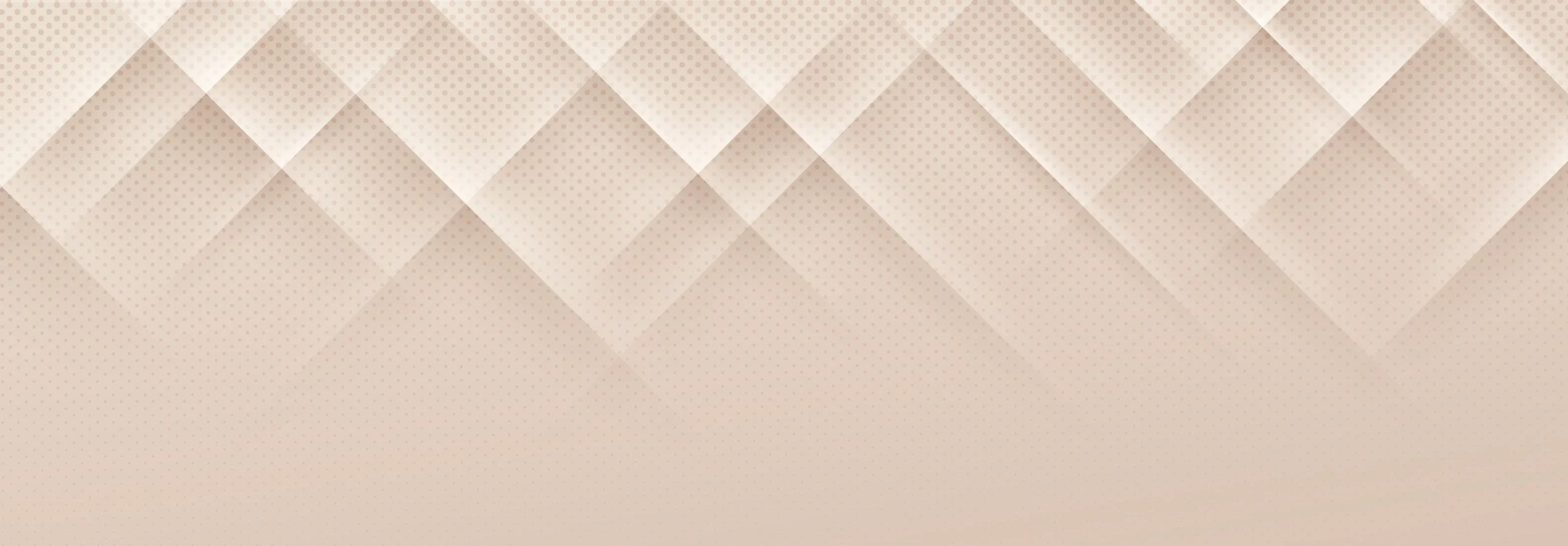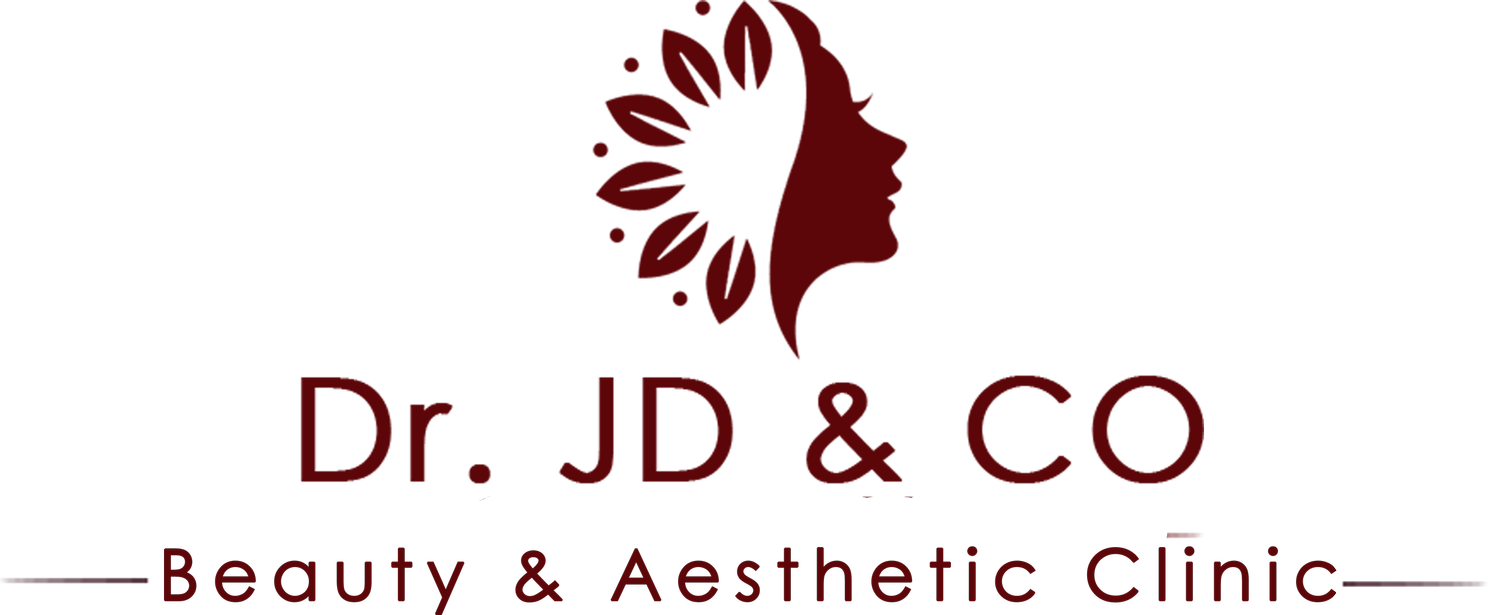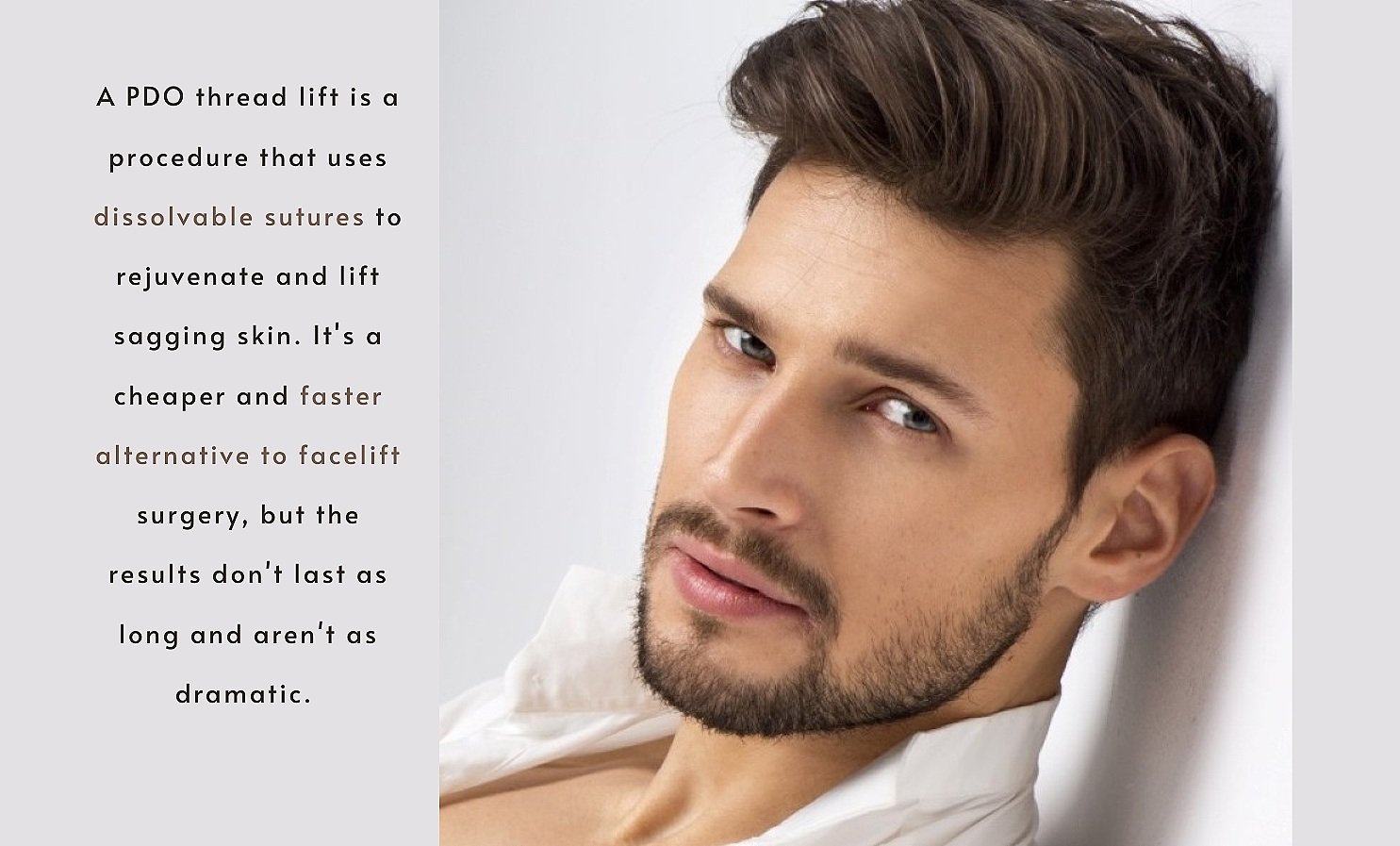Treatment
PDO FACE
THREAD LIFT
Face, neck, Décoletté and bottocks,
Treatment Overview
Often called the "lunch hour lift" or the "one stitch facelift" due to the simplicity and speed of the facelift procedure. PDO threads are one of the most popular and highly effective non-surgical means to lift and tighten loose, sagging skin tissues as well dissolve small areas of fat on the lower face and body.
What is a PDO thread lift?
PDO (polydioxanone) is a synthetic fibre widely used in areas of medicine such as general surgery and cardiology. In aesthetics, the threads help to lift sagging skin as well as stimulate new collagen - your own natural collagen.
Another interesting effect of the threads are their ability to induce lipolysis (fat cell death) which is quite effective in treating facial and body stubborn fat areas as well as inducing collagen and tightening the skin.
Innovative facial and body structure enhancement
Meso-tread treatment is a groundbreaking procedure for facial and body lifting and contouring. It tightened the contour and reinforces the skin and makes it rejuvenated. Meso-threads support the skin and keep it toned and firm.
During the treatment, sterile meso-threads are inserted into the skin and they fully resolve after 6 to 9 months. When they resolve, the newly built collagen and elastin take their role in supporting the skin. Meso-threads are very thin, highly tolerable and don’t cause allergic reactions. This technique is ideal for patients who want to improve their skin – make it firmer and more evenly toned. Meso-thread treatment can noticeably rejuvenate the skin because it triggers the production of new collagen and improves microcirculation in the areas where it is applied. The treatment actually bio-revitalizes the skin, makes it more glowing, youthful and smooth. It is non-surgical, therefore usually has little to no downtime, but it can vary since every patient is different.
Advantages of PDO thread lift
An excellent and effective cosmetic technique to lift and tighten sagging skin tissues.
Re-defines facial contours and induces collagen production.
The thread will form an integrated support structure for the tissue of the face due to collagen synthesis.
The lifting effect is at its peak 6 months later when collagen has formed around the threads.
What is the Facelift procedure?
Local anaesthetic is injected into the treatment area. The PDO thread will then be introduced using a cannula or micro-needle in the required area.
The procedure takes around 45-60 minutes, depending on what treatment you require. You will be able to fully resume your everyday routine and social commitments within a couple of days.
PDO Therapy is a tailor made treatment which can be adjusted to your requirements at any time.
Are all the PDO Threads the same?
There are several types of PDO threads, and each serves its own unique purpose. Depending on your aesthetic goals, your PDO provider may use one or many thread types during your anti-aging treatment.
What Do I Need to Do Before Treatment?
Since PDO thread lifts are non-invasive, there isn’t a lot you need to do to prepare. However, there are some precautionary measures you can take to ensure the best results from your treatment. Here are things you should avoid one to two days before treatment:
Alcohol
Ginko
Omega fish oil supplements
Chinese medicine
Vitamin E
High-intensity workouts
Steam rooms and sauna
What Do I Need to Do After Treatment?
There are not a lot of special after-care requirements to this treatment. However, you should hold off on any dental treatments for the first two weeks after your PDO thread lift. Holding your mouth open for an excessive period of time can affect the results of your treatment. Moreover, you’ll want to sleep on your back for the first couple of weeks. This ensures you don’t put too much pressure on one side of your face.
When Will I See the Final Results?
The final results of your PDO thread lift will be seen within one to two months of your treatment. How long it takes you personally depends a lot on your age. Your age is one of the leading factors in how quickly your body produces new, healthy collagen. Collagen is the protein responsible for plumping up your cheeks, filling in fine lines and smoothing out wrinkles.
What Areas Can a PDO Thread Lift Treat?
Because a PDO thread lift is so versatile, it can treat virtually any area of the face. These include the:
Neck
Jawline
Naso jugal folds
Nasolabial folds
Crow’s feet
Undereye area
Eyebrows
Cheeks
Marionette lines
Is this treatment safe?
This treatment is completely safe. It is approved by the FDA for safety and efficiency. Moreover, hundreds of thousands of treatments have been performed and there are no reports of allergic reactions, sensitivities to the threads, or serious side effects or risks.
How soon will I see results?
Some results of the treatment, such as skin lifting and some of the contouring effects, are visible immediately after treatment. In fact, your skin may look tighter when you walk out of our office than it will a week later
Course of treatment
It is important to note that for most treatments, the final results are visible around 2 weeks post-procedure. Meaning, we encourage you to remain patient during this time before making a final judgment.
That being said, each body is unique and, therefore, the biological PH balance and metabolic rate vary between clients. Results cannot be compared, predicted, or guaranteed. Should you need any follow-up appointments or have questions, please contact Dr.JD’s assistant at info@drjd.co.uk.
Book an appointment.
This non-invasive procedure works by inserting a dissolvable thread discreetly under the surface of the skin using a blunt cannula. The thread provides a source of tension which will gradually anchor itself to the tissue and stimulate the body's collagen production. This creates a smooth, tighter appearance.

-
A PDO thread lift is a revolutionary new treatment in the world of aesthetics, but PDO threads themselves have been used safely for decades for various applications, like treating gynecological disorders or suturing incisions after medical procedures. When used as an aesthetic treatment, there are a few things you should know.
-
There are different kinds of threads which may be used to lift any part of the face, including the forehead, cheeks, jowls, jawline and neck. The two main types are made of either Poly L lactic acid (PLA) or polydioxanone (PDO) also caprolactone. Both PLA and PDO have collagen stimulating properties and are resorbable (dissolve over time leaving tighter 'scar’ maybe use ‘repair’ tissue instead as they often produce Type 3 Collagen tissue behind to prolong the result.) The threads are either smooth (monos) for improving skin texture or consist of barbs, cogs, anchors or screws to reposition the tissue.
-
A typical treatment involves placement of the desired number of threads, which may range from a single thread per side but can involve 50 threads or more to treat the face and neck. Various entry points are considered depending on the individual face shape and requirements. Local anaesthetic may be injected to make the procedure as pain free as possible. The threads are introduced with a needle or a blunt ended cannula which is removed once the threads have been positioned. Threads which are used to reposition the skin will have the ends protruding after insertion and they are trimmed to below the level of the skin once the desired lift has been achieved. Smooth threads are anchored to lift and stimulate collagen.
-
Thread lifting is safe, but not entirely risk free, Dr.JD will discuss all the risks and benefits with you at consultation and again prior to treatment.
-
A local anaesthetic may be is injected to make the procedure as comfortable as possible, but some patients will find this procedure painful and some tenderness after the anaesthetic has worn off is to be expected.
Before treatment
All make up will need to be removed prior to treatment, so please come ‘fresh faced’ if possible. We are happy to remove your make-up for you prior to treatment.
Alcohol, aspirin, Ibuprofen and a range of dietary supplements including; St. Johns Wort, fish oils, Gingko Biloba, Vitamins C and E- may all contribute to bruising and are best avoided 24 hours before treatment.
Treatment cannot be administered if there is an active skin infection, including acne or cold sores or if you are unwell- including colds, coughs, sore throats etc. Do contact the clinic to discuss any illness or new medicines prior to attending.
-
Most people are able to continue with normal activities with immediate improvement in their appearance. Some will have some redness, pin prick marks, and some degree of swelling, possibly some puckering along the site of the suture, possibly, indentations at the insertion or exit points. The immediate side effects are expected to settle within 2 weeks.
For up to a week after the procedure it may feel tender around the sutures. If necessary, you can take some simple paracetamol to help with this although most patients do not bother with this step. You may feel the stitches and the anchoring cones beneath your skin especially when you apply your skincare products or make up, although you should not be able to see them.
sleep on your back for 5 nights
Make-up should not be worn for 12 hours
No facials or facial massage for 10 days
No extreme facial expressions for 2 weeks
Application of anti-biotic cream as advised.
To attend a review appointment as advised.
Avoid alcohol, vigorous exercise, sun bathing, and extremes of heat or cold for 14 days post treatment. These activities have been found to increase and prolong swelling.
Swelling may worsen in the first 24 hours, and then should settle within the first few days. Cold packs can be helpful in reducing swelling.
Bruising may take a few days to appear, arnica can be helpful in clearing bruising. It is advisable to avoid aspirin and alcohol for 12-48 hours after treatment.
Tenderness should settle as swelling goes down.




























